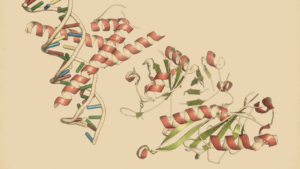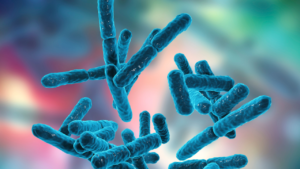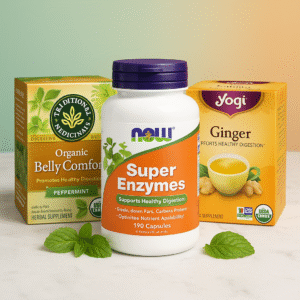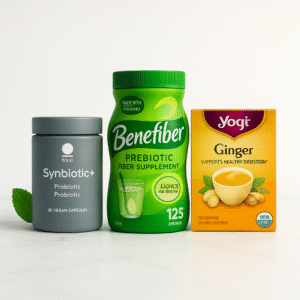How Fiber Prebiotics Can Combat Antibiotic-induced Gut Dysbiosis
Explore the role of fiber prebiotics in restoring gut balance post-antibiotic treatment. Discover how they combat antibiotic-induced gut dysbiosis.

In an era where antibiotics have become a cornerstone of modern medicine, their pervasive use has inadvertently led to a phenomenon known as Antibiotic-induced Gut Dysbiosis (AID), a condition characterized by an imbalance in the gut microbiome that can precipitate a cascade of health complications.
Amidst the growing concern over AID, a potential sentinel emerges from an unexpected quarter: our diet.
Specifically, fiber prebiotics, often overshadowed by their probiotic counterparts, are stepping into the limelight for their protective role against the deleterious impacts of antibiotics on our gut flora.
This article delves into the transformative potential of fiber prebiotics in safeguarding the microbiome from the onslaught of antibiotic treatment.
By modulating the gut's chemical environment, these dietary defenders are illustrating a remarkable capability in preserving the diversity and function of our intestinal bacteria, thus presenting a compelling, nutritionally anchored strategy in our ongoing battle against AID.
Herein, we explore the underpinnings of this synergy between fiber prebiotics and the microbiome, underscoring the need to re-evaluate our dietary choices in the context of antibiotic use and overall health.
Key Points
- Antibiotic-induced Gut Dysbiosis (AID):
- AID is a frequent side effect of antibiotic use, leading to imbalances in the gut microbiome. This dysbiosis can result in an increased presence of aerobic bacteria and specific bacterial groups, notably Proteobacteria.
- Diet's Role in Modulating Gut Environment:
- The host diet, particularly the type of carbon source present, plays a significant role in determining the chemical environment of the gut. For example, the Western high-sugar diet provides simple carbon sources that are rapidly absorbed, thereby altering the microbial environment and potentially promoting inflammation.
- Benefits of Dietary Fiber:
- Fiber supplements, specifically fiber prebiotics, can reduce the adverse effects of antibiotics on the gut microbiome. They decrease the abundance of aerobic bacteria, regulate oxidative metabolism pathways, and maintain a more balanced gut pH and redox potential. This suggests a therapeutic potential for AID.
- Microbiome Response to Fiber vs. Glucose:
- In experimental settings, when mice were given glucose as a dietary supplement, there was a noted decrease in microbial diversity, especially post-antibiotic treatment. In contrast, fiber supplementation exhibited protective effects against AID, especially when provided before, during, or after antibiotic administration.
- Impact of Fiber on AID:
- Research using metagenomic and metatranscriptomic sequencing indicated that glucose supplementation post-antibiotic treatment exacerbated the dysbiotic effects, particularly with an increase in the Proteobacteria phylum. Fiber supplementation, on the other hand, led to a more anaerobic gut environment and minimized antibiotic disruption.
In This Article
Introduction
Antibiotics, indispensable for treating infections, often have an unintended side effect: they disrupt the gut's microbial harmony, leading to what's known as antibiotic-induced gut dysbiosis (AID) A Trusted Source Cabral, D. J. et al. Microbial metabolism modulates antibiotic susceptibility within the murine gut microbiome. Cell Metab. 30, 800–823.e7 (2019).Article CAS PubMed PubMed Central Google Scholar A Trusted Source Cabral, D. J., Wurster, J. I., Korry, B. J., Penumutchu, S. & Belenky, P. Consumption of a western-style diet modulates the response of the murine gut microbiome to ciprofloxacin. mSystems 5, e00317–e00320 (2020). Article CAS PubMed PubMed Central Google Scholar A Trusted Source Lee, J. Y. et al. High-fat diet and antibiotics cooperatively impair mitochondrial bioenergetics to trigger dysbiosis that exacerbates pre-inflammatory bowel disease. Cell Host Microbe 28, 273–284.e6 (2020). Article CAS PubMed PubMed Central Google Scholar .
Such disturbances can pave the way for health challenges like inflammation, weakened immunity, and metabolic irregularities A Trusted Source Reese, A. T. et al. Antibiotic-induced changes in the microbiota disrupt redox dynamics in the gut. Elife 7, e35987 (2018). Article PubMed PubMed Central Google Scholar .
Interestingly, diet might be our ally in this battle.
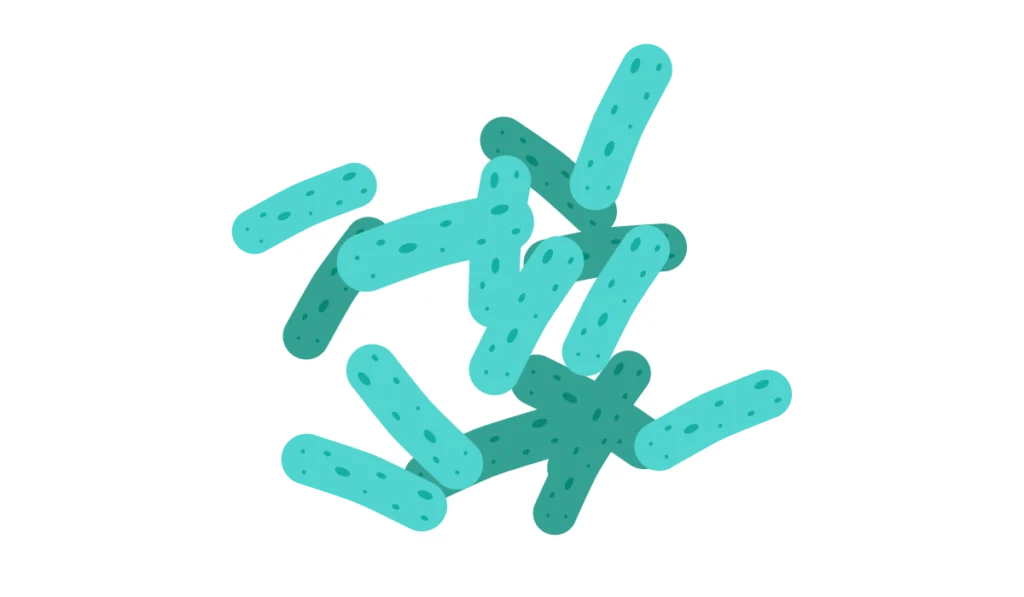
Specifically, dietary fiber supplements are showing potential in curbing these antibiotic-triggered upheavals in the gut.
Here's how it works: The bacteria in our gut thrive on our dietary intake. When our diet is predominantly sugary, these beneficial bacteria are starved of complex carbon sources, causing them to feed on our gut linings and leading to inflammation.
This supports bacteria that flourish in such an environment, often to our detriment A Trusted Source Miller, B. M., Liou, M. J., Lee, J. Y. & Baumler, A. J. The longitudinal and cross-sectional heterogeneity of the intestinal microbiota. Curr. Opin. Microbiol. 63, 221–230 (2021). Article CAS PubMed Google Scholar A Trusted Source Earle, K. A. et al. Quantitative imaging of gut microbiota spatial organization. Cell Host Microbe 18, 478–488 (2015). Article CAS PubMed PubMed Central Google Scholar A Trusted Source Rivera-Chávez, F., Lopez, C. A. & Bäumler, A. J. Oxygen as a driver of gut dysbiosis. Free Radic. Biol. Med. 105, 93–101 (2017). Article PubMed Google Scholar .
However, introducing dietary fiber alters this scenario.
Fiber is fermented by our gut bacteria into short-chain fatty acids.
These acids are then utilized in oxygen-depleting processes, promoting an environment that favors beneficial bacteria and their metabolic activities A Trusted Source Kim, M., Friesen, L., Park, J., Kim, H. M. & Kim, C. H. Microbial metabolites, short-chain fatty acids, restrain tissue bacterial load, chronic inflammation, and associated cancer in the colon of mice. Eur. J. Immunol. 48, 1235–1247 (2018). Article CAS PubMed PubMed Central Google Scholar A Trusted Source Litvak, Y., Byndloss, M. X. & Baumler, A. J. Colonocyte metabolism shapes the gut microbiota. Science 362, eaat9076 (2018). Article ADS PubMed PubMed Central Google Scholar A Trusted Source So, D. et al. Dietary fiber intervention on gut microbiota composition in healthy adults: a systematic review and meta-analysis. Am. J. Clin. Nutr. 107, 965–983 (2018). Article PubMed Google Scholar.
Research, based on female murine models, revealed that dietary fiber can indeed mitigate the negative effects of antibiotics on the gut.
With the inclusion of fiber, there's a notable reduction in the harmful bacteria and the metabolic pathways often associated with them. A Trusted Source Jones, R. M. & Neish, A. S. Redox signaling mediated by the gut microbiota. Free Radic. Biol. Med. 105, 41–47 (2017). Article CAS PubMed Google Scholar A Trusted Source Million, M. & Raoult, D. Linking gut redox to human microbiome. Hum. Microbiome J. 10, 27–32 (2018). Article Google Scholar
Furthermore, the type and quality of our diet directly sway bacterial activities in the gut. Simple sugars are quickly absorbed, amplifying AIDS's negative effects.
On the brighter side, certain fiber types, like Xanthan gum, have been shown to counteract the reduction in bacterial diversity post-antibiotic administration A Trusted Source Schnizlein, M. K., Vendrov, K. C., Edwards, S. J., Martens, E. C. & Young, V. B. Dietary xanthan gum alters antibiotic efficacy against the murine gut microbiota and attenuates clostridioides difficile colonization. mSphere 5 , E00708-19 (2020)..
While Western diets high in fats and sugars exacerbate AID effects A Trusted Source Cabral, D. J., Wurster, J. I., Korry, B. J., Penumutchu, S. & Belenky, P. Consumption of a western-style diet modulates the response of the murine gut microbiome to ciprofloxacin. mSystems 5, e00317–e00320 (2020). Article CAS PubMed PubMed Central Google Scholar A Trusted Source Lee, J. Y. et al. High-fat diet and antibiotics cooperatively impair mitochondrial bioenergetics to trigger dysbiosis that exacerbates pre-inflammatory bowel disease. Cell Host Microbe 28, 273–284.e6 (2020). Article CAS PubMed PubMed Central Google Scholar A Trusted Source Obrenovich, M., Siddiqui, B., McCloskey, B. & Reddy, V. P. The microbiota-gut-brain axis heart shunt part I: the French paradox, heart disease and the microbiota. Microorganisms 8, 490 (2020). Article CAS PubMed PubMed Central Google Scholar , fiber-rich diets can potentially shield our beneficial gut bacteria from antibiotics’ adversities.
In essence, dietary fiber emerges as a promising tool in maintaining gut health during antibiotic treatments, an insight that might reshape future therapeutic strategies.
Fiber's Role in Safeguarding Gut Health During Antibiotic Use
In a study with female C57BL/6 mice, the effects of fiber on antibiotic-induced gut dysbiosis (AID) were explored using the AIN-93G diet (EnvigoTeklad). A Trusted Source Desai, M. S. et al. A dietary fiber-deprived gut microbiota degrades the colonic mucus barrier and enhances pathogen susceptibility. Cell 167, 1339–1353.e21 (2016). Article CAS PubMed PubMed Central Google Scholar A Trusted Source Kamada, N. et al. Regulated virulence controls the ability of a pathogen to compete with the gut microbiota. Science 336, 1325–1329 (2012). Article ADS CAS PubMed PubMed Central Google Scholar
Glucose served as the carbohydrate component due to its host-friendliness and minimal adverse effects A Trusted Source Softic, S. et al. Divergent effects of glucose and fructose on hepatic lipogenesis and insulin signaling. J. Clin. Investig. 127, 4059–4074 (2017). Article PubMed PubMed Central Google Scholar .
Additionally, a mix of seven plant fibers, including cellulose and inulin, was introduced to evaluate fiber's protective attributes.
16S rRNA sequencing of fecal samples revealed:
- Mice on a glucose-centric diet experienced a consistent decline in microbial diversity.
- Incorporating fiber prior to antibiotic exposure resulted in a significant reduction in initial microbial loss, leading to enhanced recovery compared to the glucose-only group.
- During antibiotic administration, the presence of fiber notably protected the gut's microbial ecosystem.
- Following the antibiotic phase, fiber supplementation accelerated the recovery of microbial diversity relative to the glucose control.
Interestingly, even incorporating just 5% of singular fibers presented benefits for gut health post-antibiotic treatment.
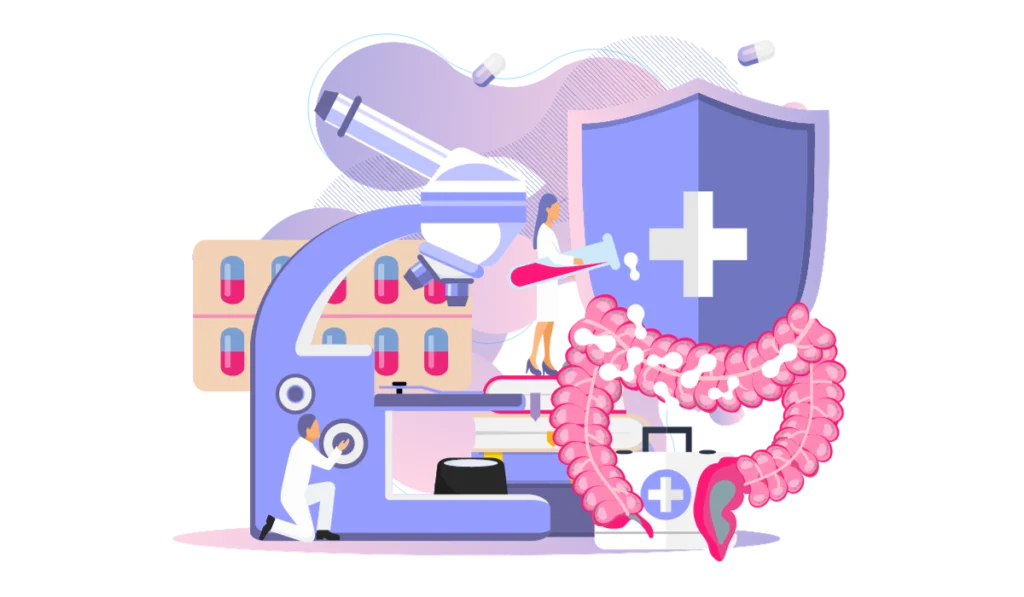
A critical insight is that simple dietary adjustments, particularly the inclusion of fiber during antibiotic courses, can profoundly impact the speed and efficacy of gut health recovery, underscoring its therapeutic potential.
Dietary Fiber vs. Glucose: Battling Antibiotic-Induced Gut Dysbiosis
In a study examining the aftermath of antibiotic treatment, metagenomic and metatranscriptomic sequencing was employed to assess mouse cecal contents on days 1 and 5 post-treatment A Trusted Source Beghini, F. et al. Integrating taxonomic, functional, and strain-level profiling of diverse microbial communities with bioBakery 3. Elife 10, e65088 (2021). Article CAS PubMed PubMed Central Google Scholar A Trusted Source Bharti, R. & Grimm, D. G. Current challenges and best-practice protocols for microbiome analysis. Brief. Bioinform. 22, 178–193 (2021). Article CAS PubMed Google Scholar .
Results indicated that while intestinal abnormalities and bacterial load remained relatively unchanged, those on a glucose-supplemented diet experienced a pronounced drop in microbial diversity after antibiotic exposure at both recorded time points.
Moreover, the adverse effect of antibiotics on microbiome composition and functionality was markedly intensified in mice consuming glucose.
Upon examining bacterial species variations, glucose consumption was correlated with a surge in the Proteobacteria phylum, especially evident by day 5.
This association with Proteobacteria, a marker of dysbiosis A Trusted Source Rivera-Chávez, F., Lopez, C. A. & Bäumler, A. J. Oxygen as a driver of gut dysbiosis. Free Radic. Biol. Med. 105, 93–101 (2017). Article PubMed Google Scholar , suggests that antibiotic disturbances are aggravated by glucose but mitigated by fiber.
Interestingly, fiber intake corresponded to a rise in Archaea, which are sensitive to oxygen[30], indicating that fiber aids in preserving the gut's anaerobic state.
In-depth analysis further corroborated these differences between glucose and fiber diets post-antibiotic treatment.
The Gut's Metabolic Dance: Glucose Accelerates While Fiber Calms
Research has unveiled the profound effects diet has on our gut's bacterial metabolism.
A surge in the gut bacteria's peptidoglycan biosynthesis - a seemingly overenthusiastic metabolic activity - is observed post-antibiotic treatment when glucose is the dietary supplement.
This phenomenon, known from previous in vitro observations, confirms that even complex in vivo microbial communities behave similarly A Trusted Source Belenky, P. et al. Bactericidal antibiotics induce toxic metabolic perturbations that lead to cellular damage. Cell Rep. 13, 968–980 (2015). Article CAS PubMed PubMed Central Google Scholar .
By the fifth day, glucose-enriched diets further boost fatty acid and heme biosynthesis pathways.
On the other hand, fiber takes a different route.
It promotes ubiquinol production and carbon-fixation processes such as the Calvin-Benson-Bassham cycle, even in the absence of photosynthetic machinery A Trusted Source Suchodolski, J. S. Chapter 2 - Gastrointestinal microbiota. In Canine and Feline Gastroenterology, (eds. Washabau, R. J. & Day, M. J.) 32-41, (W.B. Saunders, 2013). ISBN 9781416036616. .
Interestingly, the RuMP cycle, connected with Archaeal methanogenesis, seems to be heightened following fiber intake.
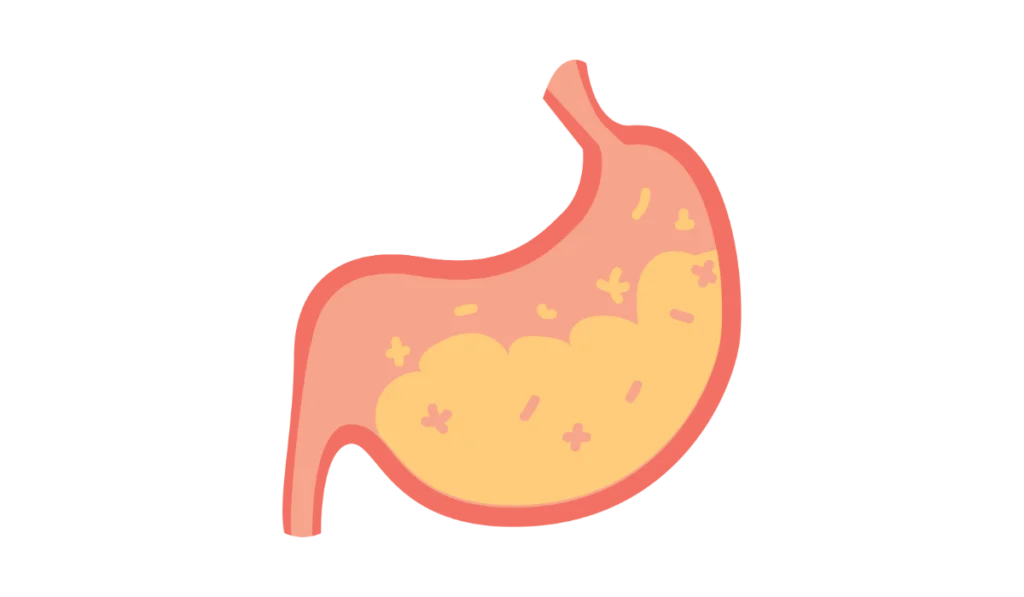
Notably, while both ubiquinol and heme partake in biochemical reactions involving iron-sulfur cluster proteins, the uptick in heme production hints at more energetic electron transfers A Trusted Source Koreny, L., Obornik, M., Horakova, E., Waller, R. F. & Lukes, J. The convoluted history of haem biosynthesis. Biol. Rev. Camb. Philos. Soc. 97, 141–162 (2022). Article PubMed Google Scholar , suggesting glucose might encourage a more inflammatory gut environment.
Further analysis showed glucose's tie with increased respiratory metabolism, especially post-antibiotic treatment A Trusted Source Khademian, M. & Imlay, J. A. How microbes evolved to tolerate oxygen. Trends Microbiol. 29, 428–440 (2021). Article CAS PubMed Google Scholar .
However, despite fiber's association with higher antibiotic resistance gene (ARG) expression in certain bacteria, by day 5, their abundance drops, reinforcing the significant influence of bacterial metabolism on observed outcomes.
The Fiber Effect: Nurturing a Healthy Gut Through Metabolic Balance
Deciphering the gut’s metabolic responses to diet can be daunting, especially with numerous uncharted bacterial species present. Yet, recognizing large shifts in diverse bacteria can hint at overarching gut behavior A Trusted Source Million, M. & Raoult, D. Linking gut redox to human microbiome. Hum. Microbiome J. 10, 27–32 (2018). Article Google Scholar A Trusted Source Miller, B. M., Liou, M. J., Lee, J. Y. & Baumler, A. J. The longitudinal and cross-sectional heterogeneity of the intestinal microbiota. Curr. Opin. Microbiol. 63, 221–230 (2021). Article CAS PubMed Google Scholar A Trusted Source Baltsavias, S. et al. In vivo wireless sensors for gut microbiome redox monitoring. IEEE Trans. Biomed. Eng. 67, 1821–1830 (2020). PubMed Google Scholar.
Surprisingly, a glucose-rich diet of post-antibiotics heightened oxidative metabolism, signified by increased oxygen and nitrate involvement in electron transfer.
There was a conspicuous surge in respiratory activity, suggesting a higher gut redox potential that hampers bacteria primarily relying on fermentation A Trusted Source Carlson, J. L., Erickson, J. M., Hess, J. M., Gould, T. J. & Slavin, J. L. Prebiotic dietary fiber and gut health: comparing the in vitro fermentations of beta-glucan, inulin and xylooligosaccharide. Nutrients 9, 1361 (2017). Article PubMed PubMed Central Google Scholar A Trusted Source Cantarel, B. L. et al. The carbohydrate-active EnZymes database (CAZy): an expert resource for Glycogenomics. Nucleic Acids Res. 37, D233–D238 (2009). Article CAS PubMed Google Scholar.
Conversely, fiber's role stood out brilliantly.
It boosted the production of carbohydrate-active enzymes, particularly those breaking down pectin and inulin.
This uptick hints at the gut's enhanced capacity to ferment, producing substrates from these enzymes.
Delving deeper, fiber was linked with carbon fixation processes like the Calvin-Benson-Bassham cycle and increased Coenzyme A production A Trusted Source Steffens, L. et al. High CO2 levels drive the TCA cycle backwards towards autotrophy. Nature 592, 784–788 (2021). Article ADS CAS PubMed Google Scholar A Trusted Source Berg, I. A. Ecological aspects of the distribution of different autotrophic CO2 fixation pathways. Appl. Environ. Microbiol. 77, 1925–1936 (2011). Article ADS CAS PubMed PubMed Central Google Scholar .
It also fostered an anaerobic gut atmosphere, shielding it from respiratory metabolism.
In essence, while glucose steers the gut towards a more oxidative state, fiber champions a restorative, fermentative mode.
By curbing the gut's redox potential and oxygen content, fiber seems to shield against the respiratory metabolism's adverse impacts after antibiotic intervention.
Glucose vs. Fiber: The Battle for Gut Bacterial Dominance
Recent studies point out that around half of all bacteria possess a component named complex 1, predominantly found in the Proteobacteria family A Trusted Source Novakovsky, G. E., Dibrova, D. V. & Mulkidjanian, A. Y. Phylogenomic analysis of type 1 NADH:quinone oxidoreductase. Biochemistry 81, 770–784 (2016). CAS PubMed Google Scholar A Trusted Source Spero, M. A., Aylward, F. O., Currie, C. R. & Donohue, T. J. Phylogenomic analysis and predicted physiological role of the proton-translocating NADH:quinone oxidoreductase (complex I) across bacteria. mBio 6, e00389–15 (2015). Article PubMed PubMed Central Google Scholar.
Why is this relevant? Complex 1 plays a key role in the energy dynamics of these bacteria.
This study found that glucose intake, post-antibiotic treatment, boosts bacteria containing complex 1.
After analyzing the transcriptomic data, a noticeable increase was observed in genes for subunits of complex 1 in a glucose-rich diet.
How was this verified?
Using Phylophlan3.0, researchers scanned 54 MAGs (Metagenome-Assembled Genomes) for complex 1 presence, pinpointing it in 6 MAGs.
These 6 showed significant shifts in their relative abundance, especially after a glucose diet A Trusted Source Miller, B. M., Liou, M. J., Lee, J. Y. & Baumler, A. J. The longitudinal and cross-sectional heterogeneity of the intestinal microbiota. Curr. Opin. Microbiol. 63, 221–230 (2021). Article CAS PubMed Google Scholar A Trusted Source Earle, K. A. et al. Quantitative imaging of gut microbiota spatial organization. Cell Host Microbe 18, 478–488 (2015). Article CAS PubMed PubMed Central Google Scholar .
Interestingly, by the 5th-day post-antibiotics, glucose continued promoting these complex 1 bacteria, while fiber intake seemed to curb their rise.
Not all bacteria responded uniformly; factors like antibiotic resistance, growth rates, and competition for nutrients shaped their responses.
The takeaway? Glucose tends to propel the gut environment towards favoring complex 1 bacteria, pushing the metabolic balance towards an oxygen-rich, aerobic mode, especially during antibiotic treatment.
Dietary Fiber vs. Glucose: The Shield Against Antibiotic Disruptions in Gut Health
In the exploration of how the gut environment responds to antibiotics, researchers leaned on sequencing techniques, focusing on mice fed with either glucose or fiber A Trusted Source Husson, O. et al. Practical improvements in soil redox potential (Eh) measurement for characterisation of soil properties. Application for comparison of conventional and conservation agriculture cropping systems. Anal. Chim. Acta 906, 98–109 (2016). Article CAS PubMed Google Scholar A Trusted Source Tano, B. F. et al. Spatial and temporal variability of soil redox potential, pH and electrical conductivity across a toposequence in the Savanna of West Africa. Agronomy 10, 1787 (2020). A Trusted Source Husson, O. Redox potential (Eh) and pH as drivers of soil/plant/microorganism systems: a transdisciplinary overview pointing to integrative opportunities for agronomy. Plant Soil 362, 389–417 (2012). Article Google Scholar .
Studies showed that antibiotic treatments tend to raise the gut's redox potential, an indicator of its chemical balance.
By the fifth day after the antibiotic course, those mice on the glucose diet exhibited a notable increase in this potential, while fiber-fed counterparts remained stable. A Trusted Source Baltsavias, S. et al. In vivo wireless sensors for gut microbiome redox monitoring. IEEE Trans. Biomed. Eng. 67 , 1821–1830 (2020). PubMed Google Scholar
Why does this matter?
The redox potential can be influenced by the pH of the environment.
Drawing insights from a Pourbaix diagram, it was evident that diet profoundly reshapes the gut's chemical landscape, which in turn affects the behavior of gut microbes.
Even though antibiotics affected both diets, the protective properties of fiber seemingly shielded the gut, preventing a dramatic redox shift.
Diet plays a pivotal role in bacterial susceptibility to antibiotics.
A significant revelation from this study was that fiber-rich diets could fortify the gut against negative antibiotic outcomes.
While the multi-omic techniques utilized are standard in research, measuring gut redox potential and pH still needs refinement.
Technology like the in vivo wireless sensors, as seen in Baltsavias, might revolutionize this space A Trusted Source Baltsavias, S. et al. In vivo wireless sensors for gut microbiome redox monitoring. IEEE Trans. Biomed. Eng. 67, 1821–1830 (2020). PubMed Google Scholar .
It's crucial to consider that removing a dietary component, like fiber, demands a replacement.
In this study, glucose filled the void.
However, it’s recognized that glucose isn't a mere neutral stand-in but represents a contrasting, fiber-lacking diet A Trusted Source Desai, M. S. et al. A dietary fiber-deprived gut microbiota degrades the colonic mucus barrier and enhances pathogen susceptibility. Cell 167, 1339–1353.e21 (2016). Article CAS PubMed PubMed Central Google Scholar A Trusted Source Kamada, N. et al. Regulated virulence controls the ability of a pathogen to compete with the gut microbiota. Science 336, 1325–1329 (2012). Article ADS CAS PubMed PubMed Central Google Scholar .
Prior research flagged diets low in fiber and high in sugars as potentially harmful, with repercussions ranging from an oxygen-saturated gastrointestinal (GI) environment to a compromised immune response.
Although this study was limited to a five-day observation window, there were no discernible variances in tissue or cytokine production, which could hint at the body's subtle metabolic responses.
Dietary shifts can significantly impact redox potential, influencing how microbes react to antibiotics.
The next logical avenue of exploration is to discern if these changes directly impact antibiotic susceptibility in the context of the host and delve deeper into the effects of diet on host cell metabolism in relation to microbiome fluctuations.
The overarching goal is to ensure that future treatments can strike a balance, maximizing health benefits without inflicting microbiome-related harm.
Discussion
- Role of Antibiotics: While antibiotics serve a critical role in modern medicine, their collateral damage to the gut microbiome has substantial implications, potentially leading to complications like inflammatory bowel disease, immune dysregulation, and metabolic disorders.
- Mitigating Effects of Diet: Diet modifications, particularly through fiber prebiotics, can change the gut's chemical environment, offering a protective buffer against the dysbiotic effects of antibiotics.
- Impact on Microbial Diversity: The study observed that glucose diets reduced microbial diversity, especially post-antibiotic treatment. Fiber, in contrast, protected the gut microbiome, especially when administered before, during, or post-antibiotic treatment.
- Microbial Metabolism and Environment: The type of dietary carbon source influences which electron acceptors reach gut bacteria, thereby driving specific biochemical reactions. The Western high-sugar diet's simple carbon sources shift the gut towards an inflammatory and aerobic environment, promoting dysbiosis.
- Dietary Interventions for AID: Various dietary interventions, especially those focusing on fiber supplementation, have emerged as promising therapeutic avenues. Notably, supplementing even at the time of antibiotic administration proved to be beneficial, emphasizing the therapeutic potential.
Conclusion
- Therapeutic Potential of Fiber: Dietary fiber supplements, particularly fiber prebiotics, exhibit strong potential as therapeutics against AID, reducing the dysbiotic impacts of antibiotic treatments.
- Relevance in Modern Medicine: Given the pervasive use of antibiotics in healthcare, understanding and leveraging diet's role in gut health is of paramount importance.
- Next Steps: Further research should aim to identify specific types of fibers and their optimal dosages for maximal benefit. Additionally, human trials could validate the findings from murine models, paving the way for new dietary recommendations in conjunction with antibiotic treatments.
- Holistic Approach: Beyond antibiotics, understanding the broader implications of diet on gut health can lead to more holistic approaches to health, emphasizing the importance of dietary choices in maintaining overall well-being.
- Translational Implications: The findings have significant translational potential, suggesting that simple dietary interventions could offer a protective buffer against some of the most common medications' side effects in modern medicine.
Review date not set.
How we reviewed this article:
Latest on:
